5 factors to consider when selecting PPE
5 factors to consider when selecting PPE
Posted on May 28, 2020
As sectors from healthcare to retail to manufacturing have seen over the past months, our personal protective equipment (PPE) supply chains are facing unprecedented stress. The pandemic has created an incredible demand for PPE while reminding us that proper sourcing, fitting, policies and procedures are critical to keeping employees safe from COVID-19 as well as a myriad of other occupational health risks and diseases.
Here are five things to consider when we are selecting PPE within the current climate.
HAZARD IDENTIFCATION
Each piece of equipment should be evaluated to ensure that it is the most effective and comfortable gear for the hazards that that workers face within a given manufacturing operation. To do so, each manufacturer must first understand which hazards it is protecting its people from. For some manufacturers this may mean dust, fumes or aerosols. For others, it may mean noise levels. The list goes on and no two facilities are alike. What’s more, each hazard will then have specific considerations that must be evaluated. What is the safe exposure limit and how much exposure is in each facility? Are there limitations on the PPE based on your environment (oily atmosphere, heat, sparks, open flames, etc.)?
COVID-19 has introduced a new occupational hazard, but the same threat identification and risk mitigation principles apply. CME has created many resources to assist manufacturers. Whether disinfectant procedures and the identification of high-touch areas, identifying safe ways to handle imported goods and shipments or social distancing, PPE is an appropriate step once it has been determined that the risk cannot be eliminated through other, less intrusive means first.
LEVEL OF PROTECTION NEEDED
Once the hazard is understood, match the level of protection to the exposure. In other words, don’t go hunting mosquitos with a shotgun. The CSA standard for the Selection, Care, and Use of Respirators asks that you identify the hazard ratio for your respiratory dangers and match that with a respirator that has the right assigned protection factor. This assessment will help you identify the minimum level of protection required and gives you the opportunity to select alternative PPE as a back up if your preferred respiratory protection becomes unavailable.
PPE AVAILABILITY
Manufacturers should work with their vendors to identify which products they have the strongest supply chain for and ensure that they have fit tested their people on specific equipment or that they have the ability to perform that fit testing quickly. COVID-19 related PPE may be available through alternative supply chains, such as face masks produced by local community members or businesses who have temporarily retooled. Be mindful of the requirements of your employees. Will employees be responsible for bring their masks to work each day? Will the employer provide a supply to each employee and if so, how many? How frequently should the face coverings be laundered and by whom? Be sure to have a plan and policies in place and clearly communicate to all impacted employees. Communication should include not just amended policies, but also updating signage at the entrances and throughout your facilities. Keep in mind the “total cost of ownership” for your current and back up PPE stocks. Shipping times and costs, availability, comfort and wearability all impact the actual cost of the product to your organization and need to be factored in.
BURN RATE & DISPOSAL
Understanding how much PPE you are consuming will also help you identify how much of a safety stock may be required, as well as any opportunities to improve operational practices regarding equipment use. The below resources offer helpful guidance to calculate burn rate in your facility.
- Respirators (CAN/CSA Z94.4-02 Selection, Use, and Care of Respirators)
- Face Covering Masks
- Eye and Face protection (CAN/CSA Z94.3-02 Eye and Face Protectors, CSA Z94.3-02 Protective Eyewear: A User’s Guide)
Control of PPE supply involves two important factors: ensuring PPE is still readily available to those who need it and that the organization is conforming to proper PPE lifespan use. Once you understand your burn rate, calculate how much PPE your operation requires on a daily basis. Ensure that you are prioritizing the equipment in your operation so that you mission critical processes will always have the equipment needed. During COVID-19, many manufacturers have reported shortages with PPE. Employees may mistakenly believe that certain PPE items offer greater protection against COVID-19 or may feel that “more is better” for personal safety. These misconceptions can in fact harm employees. In fact, the now well-known adage “my mask protects you, your mask protects me” counters the faulty line of thinking that masks improve personal health and safety. Creating a culture where each person is accountable for fulfilling their safety responsibilities is key. Supervisors, safety and health professionals, and the use of audit teams can all support this culture and encourage the appropriate use of PPE on the job at all times.
FIT (FITMENT)
We’ve all seen the photos of health care workers with bruising, cuts, and swelling in the areas where their PPE sits; rug-burn behind the ears from wearing surgical masks for a full 12-hour shift, or bruised faces from masks pulled too tight by “ear saver” devices. These workplace injuries are a result of improperly fitted PPE. Mask straps are designed to be looped behind the ear and altering the fit with means the mask is pulled an extra 4-5 inches back through an ear saving device, creating a new set of injuries and highlighting an important point. Comfort and wearability are key to PPE being worn by ANY worker. Contact a PPE expert, Made Safe or other, in your area to help identify and overcome the specific issues with your equipment.
For more information
Contact our team of health and safety experts for manufacturing-specific insights and supports: info@madesafe.ca
